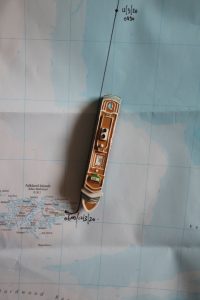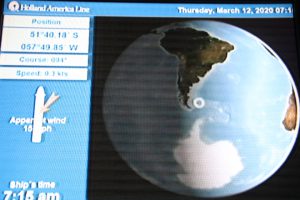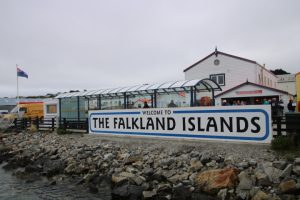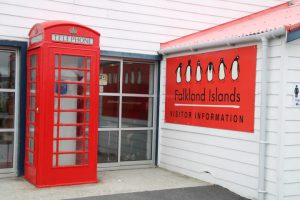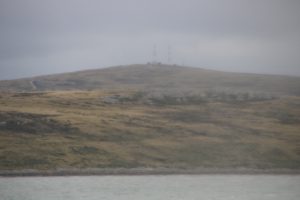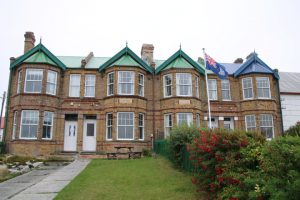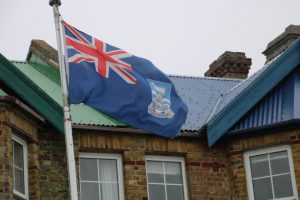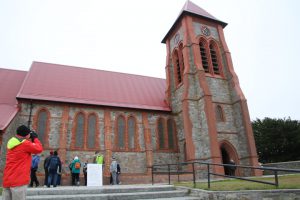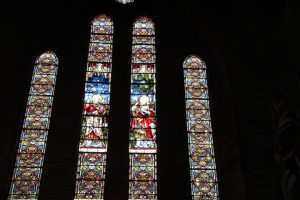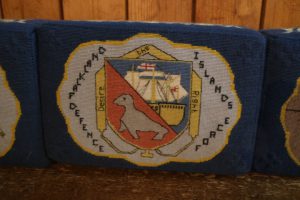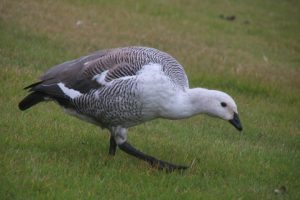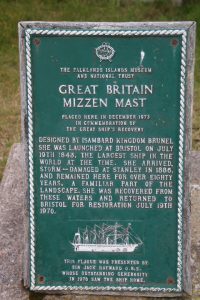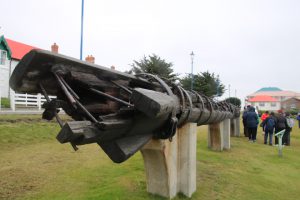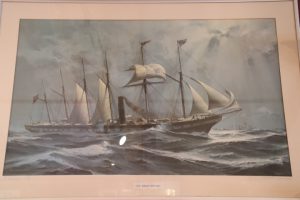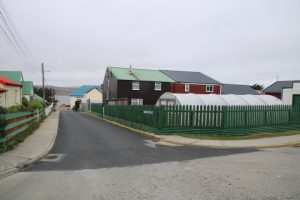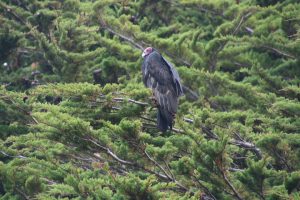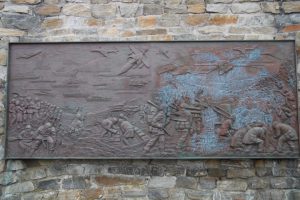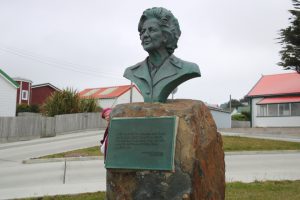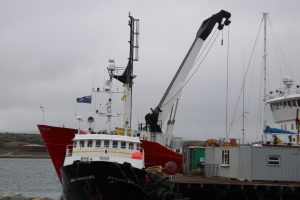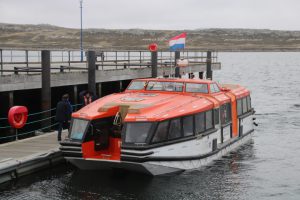We arrived at Stanley on the Falkland Islands at 06:00 after a stormy overnight voyage. It is possible that we went into a bay for shelter before arrival offshore in light winds. Transfer to the town was by ship’s tender.
The islands were discovered by the Portuguese in the 16th century but it was the French (1764) and British (1766) who established ports on different islands with Spain claiming and renaming them at some stage. Malvinas is a Spanish adaptation of St. Malo, a key French port at that time. Argentina has adopted that name. The islands were abandoned until its first permanent settlement developed in the 1840s when the British sent a group of ex-military people with a shipment of simple flat pack houses called ‘kit houses’. Each house had 10 acres to cultivate. Later sheep were tended and ships maintained through two world wars until the armed conflict of 1982 against Argentina over sovereign ship. Things have changed since Britain was victorious in 74 days. There are now fewer sheep and ships.
Today’s population of about 3000 live mostly in Stanley which is like an English fishing village on a Scottish Island! The climate is described as sub-Antarctic because of low annual temperatures (around 6°C) which inhibits plant growth and decomposition so there is little fertile soil. The surrounding South Atlantic takes the edge off the temperature in winter.
We walked from the landing jetty along Ross Road, Stanley’s seafront, passing Jubilee Villas, now the home of Falkland’s conservation.
Christchurch Cathedral and its whalebone arch is the most southerly in the world. The arch was presented to the islands in 1933 by whalers from South Georgia.
Along the road is the mizzenmast of the SS Great Britain. Her remains were left to decay here until they were salvaged and returned to the UK in the 1970s. The reconstructed ship is on display in her original dock in Bristol, UK.
Beyond the town is the memorial to the Battle of the Falkland Islands of 8th December 1914 which saw the destruction of part of the German fleet under Vice Admiral Graf Von Spee.
Along the way back, and near Government House, is the monument to the liberation of 1982. Nearby is a bust of Prime Minister Margaret Thatcher who was responsible for sending the Task Force to regain control of the islands.
We departed Stanley during dinner and are heading for the Cape Horn region.
